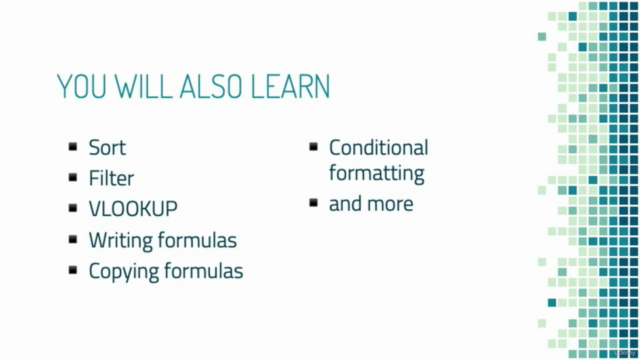Getting Answers from Data using Excel for Mac or Windows

Why take this course?
📚 Case Studies with Excel
As an AI language model trained on a variety of data sets, including business and financial scenarios, I can guide you through the process of solving real-world problems using Excel. Below are the case studies we'll explore, along with the relevant Excel techniques that can be applied to each scenario. These techniques are not only applicable to the given examples but can also be adapted to a wide range of situations you might encounter as a decision maker.
Case Study 1: Sales Analysis and Forecasting
Scenario: Your company's sales have been declining over the past quarter, and you need to analyze the data to identify trends and forecast future sales.
Relevant Excel Techniques:
- Data visualization using charts and graphs
- Time series analysis with Excel's FORECAST.ETS function
- Regression analysis to understand the relationship between sales and other variables
- Scenario analysis to explore different potential outcomes
Case Study 2: Resource Allocation for Maximum Impact
Scenario: Your organization is planning to expand its services, but resources are limited. You need to determine how to allocate these resources most effectively to maximize impact.
Relevant Excel Techniques:
- Data tables for what-if analysis and sensitivity analysis
- Optimization techniques like Solver for resource allocation
- PivotTables to summarize data and identify key trends or areas for growth
- Decision matrix for evaluating different projects or services based on various criteria
Case Study 3: Budgeting and Cost Reduction
Scenario: Your department's budget is being cut, and you need to find ways to reduce costs without impacting productivity.
Relevant Excel Techniques:
- PivotTables to analyze spending patterns and identify areas for potential savings
- Conditional formatting to highlight anomalies or excessive spending
- What-if analysis using data tables
- Cost-benefit analysis to evaluate the consequences of different cost reduction strategies
Case Study 4: Projecting Cash Flow
Scenario: As a financial manager, you need to project cash flow for the next year to ensure your company has enough liquidity to meet its obligations.
Relevant Excel Techniques:
- Creating a budget model with forecasted income and expenses
- Use of Goal Seek or Solver to find a desired outcome (e.g., zero cash flow deficit)
- Data tables to evaluate the impact of different sales and expense projections on cash flow
- Sensitivity analysis to understand how changes in assumptions affect the projection
Case Study 5: Employee Performance Review
Scenario: You are tasked with evaluating employee performance and identifying areas where employees need additional training or support.
Relevant Excel Techniques:
- Data sorting and filtering to segment employees by performance levels
- Use of formulas and pivot tables to identify trends and patterns in performance data
- Dashboard creation for a comprehensive overview of employee performance metrics
- Scatter plots or bubble charts to visualize the relationship between performance and other variables (e.g., tenure, training)
Case Study 6: Healthcare Utilization Analysis
Scenario: As a healthcare administrator, you need to analyze patient visit data to understand utilization patterns and identify potential areas for optimization.
Relevant Excel Techniques:
- PivotTables to summarize data by different dimensions (e.g., patient demographics, time of day)
- Correlation analysis to identify relationships between different types of visits
- Regression models to predict future healthcare demands
- Time series forecasting to anticipate seasonal patterns or trends over time
Case Study 7: Marketing Campaign Effectiveness
Scenario: Your marketing team has launched several campaigns, but it's unclear which ones are most effective. You need to analyze campaign data to determine their ROI and optimize future efforts.
Relevant Excel Techniques:
- PivotTables to summarize data on campaign performance metrics
- Linear regression analysis to understand the relationship between marketing spend and customer engagement or sales
- Conjoint analysis to assess the impact of different campaign elements (e.g., messaging, channels) on consumer response
- Advanced charts like scatter plots, line charts, and bar charts to visualize data and trends
Case Study 8: Supply Chain Optimization
Scenario: Your company's supply chain is facing challenges, leading to delays in product delivery. You need to identify bottlenecks and optimize the supply chain process for better efficiency.
Relevant Excel Techniques:
- Data analysis to pinpoint delays and their causes
- Network diagrams or flowcharts to visualize the supply chain process
- What-if analysis to explore alternative scenarios (e.g., different suppliers, inventory levels)
- Optimization with Solver to find an optimal balance between costs and service levels
Case Study 9: Investment Portfolio Analysis
Scenario: As a financial advisor, you need to analyze the performance of your clients' investment portfolios and provide recommendations for portfolio adjustments.
Relevant Excel Techniques:
- Time series analysis to evaluate investment returns over different time periods
- Risk assessment using variance or standard deviation calculations
- Efficient Frontier analysis to optimize the trade-off between risk and return
- Sensitivity analysis to understand how portfolio performance is affected by market changes
Case Study 10: Performance Benchmarking
Scenario: Your company wants to benchmark its performance against industry standards to identify areas for improvement.
Relevant Excel Techniques:
- Collecting and organizing industry data using PivotTables
- Creating a dashboard to compare your company's performance metrics with industry averages
- Regression analysis to understand the gap between your company's performance and that of industry leaders
- Data visualization tools to clearly present benchmarking results and insights
These case studies are just examples of how Excel can be used as a powerful tool for data analysis, decision making, and strategic planning. The techniques described can be applied in countless other scenarios, making you an effective decision maker equipped with data-driven insights.
Course Gallery




Loading charts...